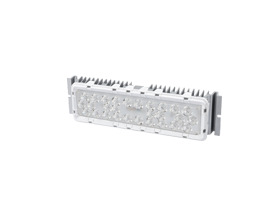Why Do LED Lights with the Same Wattage Have Different Brightness?
1. The light source efficiency of LED lamps is different
LED lamps consume electricity and emit light. This involves the problem of conversion efficiency, that is, the light efficiency index. LEDs were just born with a light effect of only a few tenths of a lumens per watt. Now high-quality LED lamp beads can reach 200 lm/w, a difference of several thousand times. Until now, the luminous efficacy of LED has been continuously refreshed every year. Therefore, it is not surprising that light bulbs of the same specification assembled with lamp beads of different periods or different manufacturers have different brightness.
2. The power efficiency of LED lamps is different
LED lamp beads are nonlinear components with negative temperature and are extremely sensitive to changes in temperature and voltage. Therefore, neither the AC nor the DC power supply can directly supply power to the LED, but must be driven by a constant current to work. The efficiency of different quality constant current drives varies greatly, ranging from 50% to 90%. Therefore, even if a light source with high luminous efficiency is selected, such as the low efficiency of constant current drive, it will also lead to insufficient brightness.
3. The power labeling of LED lamps is based on different
Some manufacturers take the actual power consumption of the whole lamp as the criterion, while others take the power of the lamp bead as the basis. Since the efficiency of the power supply cannot be 100%, the LED bulbs with the same power may be marked with different powers by different manufacturers.
4. The area of the light-emitting part of the LED lamps is different
Two bulbs of different shapes with the same wattage can sometimes appear to be very different in brightness. For example, a small light bulb will appear brighter than a large light bulb. Bulbs look brighter than tubes, etc. This is because the area of the light-emitting portion is different. Since the same light energy is distributed in different areas, the luminous intensity per unit area is inversely proportional to the area. Therefore, although the brightness of the light source itself is different due to the different light-emitting area, the lighting effect is still very close.
5. The color temperature of LED lamps is different
Color temperature is an important indicator of lighting fixtures. The unit of color temperature is "K", which is 273.15 different from our commonly used "℃". Both : 0°C is equivalent to 273.15K. The human eye perceives light with different color temperatures differently. Under the premise of the same luminous flux, the high color temperature light will appear brighter.
 English
English  中文
中文
 日本語
日本語
 Deutsch
Deutsch
 Türkçe
Türkçe



